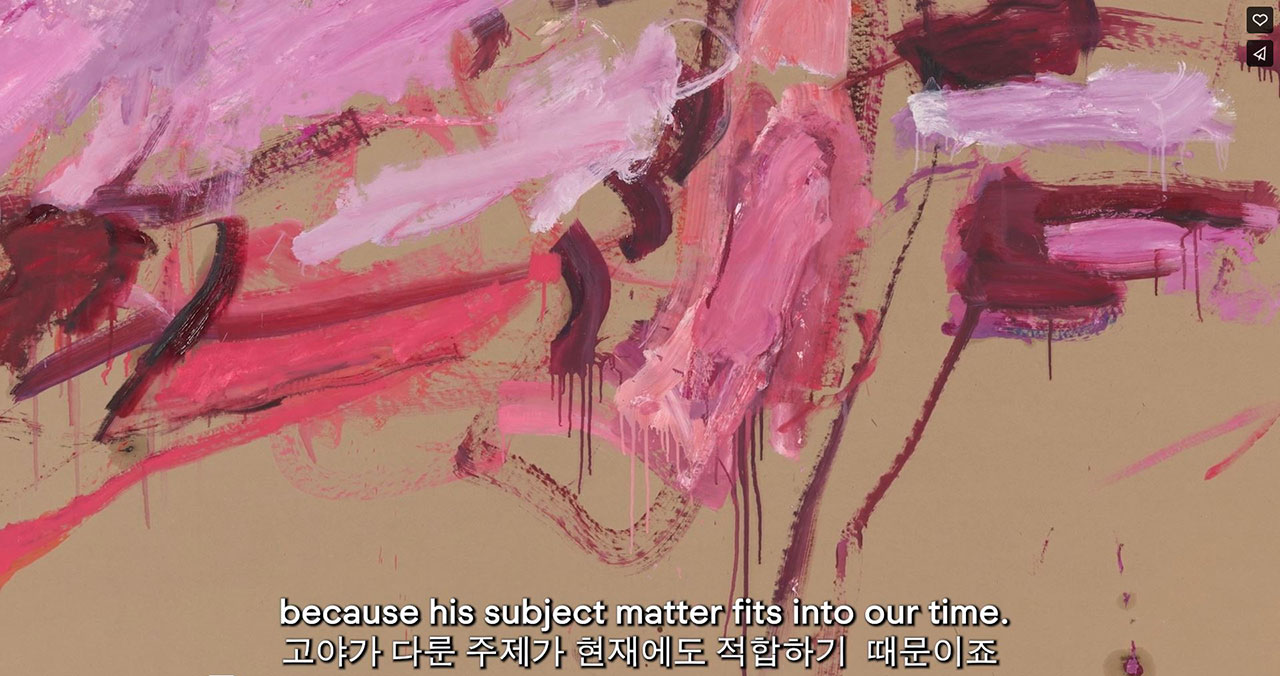VIDEO: Martha Jungwirth-Looking the Goat in the Eye
 Martha Jungwirth’s exhibition at Thaddaeus Ropac Seoul, “Looking the Goat in the Eye”, marks the Austrian painter’s first solo presentation in South Korea. On view are recent works in oil paint and watercolour, showcasing the breadth of the artist’s sources of inspiration, as well as her idiosyncratic painting process, which she describes as a ‘dynamic space’ of ‘action and passion’. Martha Jungwirth has been a central figure in the Austrian art scene for over six decades, but it is within the past 15 years that her vivid and expressive paintings have garnered universal acclaim and international attention. Neither figurative nor resolutely abstract, her works are firmly anchored in the world around her and draw on a variety of sources, from the artist’s travels to the media, as well as mythology and the history of art.
Martha Jungwirth’s exhibition at Thaddaeus Ropac Seoul, “Looking the Goat in the Eye”, marks the Austrian painter’s first solo presentation in South Korea. On view are recent works in oil paint and watercolour, showcasing the breadth of the artist’s sources of inspiration, as well as her idiosyncratic painting process, which she describes as a ‘dynamic space’ of ‘action and passion’. Martha Jungwirth has been a central figure in the Austrian art scene for over six decades, but it is within the past 15 years that her vivid and expressive paintings have garnered universal acclaim and international attention. Neither figurative nor resolutely abstract, her works are firmly anchored in the world around her and draw on a variety of sources, from the artist’s travels to the media, as well as mythology and the history of art.
“My marks on the picture, my spots and lines, I want to make them more concise and condense them. I really want to get rid of the superfluous, so to speak. It should be a concentrated action that develops here. Then comes the point where I suddenly know; now, it’s over. Now, I’m not allowed to add anything else. I don’t want the filled picture either, but the open one”. Jungwirth describes her sources as “impulses”, which she channels onto the paper in “a flow undisturbed by reflection”. This embodied, visceral approach to painting is echoed in the palette of her works, which often features bright shades of red, pink flesh tones and bruised magentas.
As the artist explains in her poetic manifesto “the ape in me” (1988), her paintings occupy an intuitive space that exists beyond the formation of recognisable images, ‘before spoken language’, ‘before memory’ and ‘before the obtrusiveness of objects’. The result is eruptive, with constellations of blotches of colour assembled into half-recognisable images that bear the trace of the artist’s body through scratches and finger marks. Yet, Jungwirth’s compositions never overwhelm the page. The whirling, dashing paint is tempered by the large expanses of ground she leaves bare, allowing the grain of her chosen support to appear, for free space is as important to her as colour. She often uses handmade paper, old accounting books and the cardboard backing of picture frames, as though the painting were an event that has landed, by chance, on a pre-existing support, highlighting the sense of suspension that characterises all of the artist’s work.
Jungwirth’s paintings hang between the real world and the imagined, where the concrete materiality of paint translates into abstraction and the visceral is inextricably linked to the subjective. They are the result of a different epistemology guided by movement and perception that seeks to reverse what the artist describes as ‘the moment at the end of / primitive thinking at the age of seven when teachers / start drilling rules and drive out the fairy-tale age.’
Martha Jungwirth, Looking the Goat in the Eye, © & Courtesy Thaddaeus Ropac Gallery
